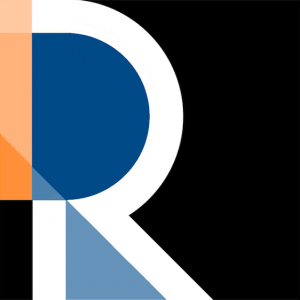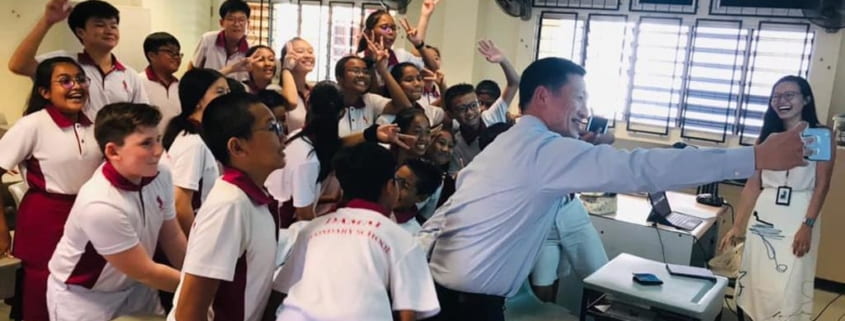Lifting the bottom: How about a S’pore DreamFund to help students from low-income families?
This essay, by Ng Yi Ming, Ng Qi Siang and Heather Cheng Hoi Yeuk from our Economic Development and Inclusion Policy Centre, was published in TODAY newspaper on 28 March 2019. This was also the winning entry of an essay competition held in conjunction with NUS’ U@live forum on the topic “Education – Still a Social Leveller?”. The forum was held on 27 March 2019, with Education Minister Ong Ye Kung, Professor Tan Tai Yong, and Ng Qi Siang on the panel. Ng Yi Ming gave an address on their DreamFund proposal before the panel discussion.
DreamFund: Enabling Life-long Dreams for All Singaporeans
Meritocracy lies at the heart of the Singapore Dream – anyone who works hard will have equal opportunity to succeed regardless of background. Yet this cherished aspiration is increasingly under threat from parentocracy, where affluent parents draw on superior financial resources to purchase child developmental advantages. To “lift the bottom”, as Education Minister Ong Ye Kung puts it,1 we propose DreamFund – a new credit scheme for low-income students in pre-tertiary schooling – preserving meritocracy through financial empowerment for low-income students to compete with affluent peers on a more equal footing.
Socio-economic stratification is a core issue today. Despite existing governmental intervention, Singapore’s gini-coefficient (after taxes and transfers) has persisted at around 0.402 for the past 3 years. In 2018, the lower 50% of incomes grew at a slower rate than the upper half.2 Almost 50% of Singaporeans surveyed in 2018 considered the growing class divide the greatest social issue,3 suggesting weakening national faith in the meritocratic principles that underpins Singaporean society.
We hold that educational inequality is rooted in socioeconomic inequality. As the government extensively funds public education, one way the educational ‘arms race’ manifests itself is through private tuition.4 Singaporeans rank 3rd in the world for annual spending on tuition – nearly double the global average.5 In 2015, parents with a monthly income above US$4500 spent double on tuition than parents earning below US$2250.60.
Beyond academics, non-academic aptitudes like in music, sports, or even coding, are becoming increasingly relevant given the recent broadening of the Direct School Admission (DSA) scheme to recognise “raw talent potential” outside formal grades or achievements.7 Affluent parents thus maintain another avenue to purchase extracurricular developmental opportunities for their children to scale the education ladder. Furthermore, income-related environmental factors such as longer travel time to school or other ‘negative factors’ associated with the home have been shown to negatively affect learning and grades.8 This is how socioeconomic inequality undermines child developmental equity outside of and long before formal education.
Weighed down by such disadvantages, only 10% of low-income (bottom 25%) students enter the top 25% of academic performers.9 A 30-year New Zealand study found that, after controls, a top quintile family income engendered 1.5x higher degree attainment than the bottom quintile.10 Academic qualifications in turn strongly determine future income: Singaporean degree holders earn 1.7 times more monthly income than diploma holders (2017).9 Education thus ceases to be a social leveler, instead enabling elites to monopolize educational resources and socioeconomic capital across generations.4 Indeed, Minister Ong has acknowledged that meritocracy has spawned systemic unfairness: with children having different starting points, low-income families face greater difficulty breaking free of the low income trap.11
Existing income supplementary schemes do not adequately provide for low-income students. The Workfare Income Supplement does not consider the number of dependents in a worker’s family. Moreover, informally employed and unemployed individuals are not covered, penalising children for their parents’ circumstances.12 Educational funding schemes like Edusave only apply to in-school activities.13 Such gaps in existing policies mean that more must be done to close the educational achievement gap in Singapore.
To tackle unequal private resources available to underprivileged school-goers, we propose DreamFund, a new credit scheme for low-income students in pre-tertiary schooling. Implemented by the Ministry of Social & Family Development and applying to students in the bottom quartile of national income, monthly credits will be allocated to a new DreamFund child development account, which can be used at approved enrichment centres and bookstores for private academic tuition, extra-curricular enrichment programs, and learning support resources. This amount will be costed based on a basket of enrichment programs and products commonly purchased by Singaporean students. As DreamFund is not tied to parental employment, it will cover children of unemployed and informally employed workers.
DreamFund will equalize out-of-school growth opportunities and resources for children in the bottom 25% through boosting family income. This ties in with an ongoing MOE-led task force led by Second Minister for Education Indranee Rajah which seeks strengthen such support, “possibly extending to those in the bottom 40%”.14 A 2016 U.S. study indicated that such direct income support yields positive impacts on academic performance and eventual adult employment rates for low-income children.15
Beyond the financial boost itself, a 2018 Chinese study highlighted that “Child Development Accounts” like DreamFund simultaneously shift parental and children attitudes.16 Significantly, such schemes cultivated conscious parental asset-building for children’s long-term development, with positive spillover effects to student motivation. These are two key focus areas of the MOE task-force.14
Furthermore, extra-curricular opportunities enabled by DreamFund encourages the development of non-academic skill-sets and soft skills.17 Such skills will be essential within an Industry 4.0 economy, where technological disruption increases demand for an intellectually-versatile workforce.18 DreamFund is thus a social investment in Singapore’s human capital, boosting economic growth whilst reducing inequality.19
This policy is both feasible and affordable. Online-based credit schemes (e.g. SkillsFuture) exist today.20 Regarding cost concerns, the targeted nature of DreamFund makes it a financially sustainable endeavour relative to existing social policies. Assuming a S$100 monthly payout to children aged 7-18 from the bottom income quartile, DreamFund will cost S$150 million annually – a fraction of WorkFare, which offers low-income workers $125-300 monthly and cost S$667 million in 2016.21 Credit schemes also prevent welfare fraud by releasing funds only to reimburse legitimate expenditure. DreamFund is thus a value-for-money social investment that will improve equality of opportunity and human resource development.
Going beyond, while DreamFund can alleviate educational inequality in the short to medium term, deeper reforms are required to tackle the root cause of this problem – wider socio-economic inequality. While new redistributive policies to narrow the income gap may require increases in government spending, it is money worth spending to preserve the meritocratic nature of our society. To give Singaporeans a sense of national identity and a stake in Singapore’s progress, we must keep the Singapore Dream alive.
Acknowledgements
We are grateful to Ernest Tan for his critical suggestions for the essay. We also acknowledge Mesbaul Anindo, Martynas Galnaitis, Sakshyat Khadka, and Tejas Pal for their contributions to the DreamFund policy memo, which the essay is based on.
References
- Lianne Chua, “Lift the bottom, not cap the top: Minister Ong Ye Kung outlines key principles on education system,” Channel News Asia, 11 July, 2018,https://www.channelnewsasia.com/news/singapore/ong-ye-kung-principles-singapore-education-system-10520356/
- “Singapore household incomes grew in 2018, income inequality stable,” Channel News Asia, 13 February, 2019, https://www.channelnewsasia.com/news/singapore/singapore-household-income-grew-in-2018-income-inequality-11238462/
- Derrick A Paulo, “Class – not race nor religion – is potentially Singapore’s most divisive fault line,” Channel News Asia, 1 October, 2018, https://www.channelnewsasia.com/news/cnainsider/regardless-class-race-religion-survey-singapore-income-divide-10774682
- Gee, Christopher. “The Educational ‘Arms Race’: All for One, Loss for All.” IPS Working Paper, (2012): 27–28.
- “Singaporeans spend twice the global average on children’s local education: HSBC”, Today, 30 August, 2017, https://www.todayonline.com/singapore/singaporeans-spend-twice-global-average-childrens-local-education-hsbc
- Amelia Teng, “Better-educated parents with higher incomes spend more,” The Straits Times, 4 July, 2015, https://www.straitstimes.com/singapore/education/better-educated-parents-with-higher-incomes-spend-more?fbclid=IwAR0zmgEhaXot_CtxSk5JPDCH_jHPdNArTsKSqwKlD3tx9jxLnNEFudSG4p4
- Lianne Chua, “More ‘inclusive’ DSA application process will help less affluent students”, Channel News Asia, 8 November, 2018, https://www.channelnewsasia.com/news/singapore/more-inclusive-dsa-application-process-help-less-affluent-10909842
- Cheo, Roland, and Quah, Euston. “Mothers, Maids and Tutors: An Empirical Evaluation of their Effect on Children’s Academic Grades in Singapore.” Education Economics, Vol. 13, No. 3 (2005), p.269-285. doi: 10.1080/09645290500073746.
- “Labour Force in Singapore 2016: Employment Table(s),” Ministry of Manpower, Singapore, released on 24 January, 2017, http://stats.mom.gov.sg/Pages/Labour-Force-in-Singapore-2016-Employment.aspx
- Gibb, Sheree J., David M. Fergusson, and L. John Horwood. “Childhood Family Income and Life Outcomes in Adulthood: Findings from a 30-Year Longitudinal Study in New Zealand.” Social Science & Medicine 74, no. 12 (2012): 1979-1986. https://doi.org/10.1016/j.socscimed.2012.02.028
- Kenneth Cheng, “Systemic unfairness stems from success — not failure — of meritocracy: Ong Ye Kung,” Today, 24 October, 2018, https://www.todayonline.com/singapore/systemic-unfairness-stems-success-not-failure-meritocracy-ong-ye-kung?fbclid=IwAR0R4huyUFAoIf2AW1nyUpY-mc4igmF6vmb8nzhlaF1hubbqilyXFpVhe0o
- “Workfare Income Supplement (WIS) Scheme Eligibility Criteria,” Workfare, Ministry of Manpower, Singapore, accessed 30 November, 2018, https://www.workfare.gov.sg/Pages/WIS-Eligibility-Criteria.aspx
- “Edusave,” Ministry of Education, Singapore, accessed 30 November, 2018, https://www.moe.gov.sg/education/edusave
- https://www.channelnewsasia.com/news/singapore/moe-taskforce-students-disadvantaged-families-indranee-10872262
- Sherman, Arloc, BA, Brandon DeBot BA, and Chye-Ching Huang LLM. “Boosting Low-Income Children’s Opportunities to Succeed through Direct Income Support.” Academic Pediatrics 16, no. 3 (2016): S90-S97. https://doi.org/10.1016/j.acap.2016.01.008.
- Fang, Shu, Jin Huang, Jami Curley, and Julie Birkenmaier. “Family Assets, Parental Expectations, and Children Educational Performance: An Empirical Examination from China.” Children and Youth Services Review 87, (2018): 60-68. https://doi.org/10.1016/j.childyouth.2018.02.018
- Snellman, Kaisa, Jennifer M. Silva, Carl B. Frederick, and Robert D. Putnam. “The Engagement Gap: Social Mobility and Extracurricular Participation among American Youth.” The Annals of the American Academy of Political and Social Science 657, no. 1 (2015): 194;207;-207. https://doi.org/10.1177/0002716214548398.
- Nancy W. Gleason, “Singapore’s Higher Education Systems in the Era of the Fourth Industrial Revolution: Preparing Lifelong Learners,” in Gleason, Nancy W. Higher Education in the Era of the Fourth Industrial Revolution. Singapore: Springer Singapore, 2018. https://doi.org/10.1007/978-981-13-0194-0_7.
- Linda Lim, “How Inequality and Low Wages Can Stall Growth,” The Straits Times, July 21, 2018, sec. Opinion, https://www-straitstimes-com.libproxy.yale-nus.edu.sg/opinion/how-inequality-and-low-wages-can-stall-growth.
- “SkillsFuture Credit,” SkillsFuture, Government of Singapore, accessed 30 November, 2018, http://www.skillsfuture.sg/Credit
- Chew Soon Beng and Linda Low, “Why Workfare works better for Singapore than a minimum wage,” 13 February, 2019, https://www.todayonline.com/commentary/why-workfare-works-better-singapore-minimum-wage
Image Credit: Ong Ye Kung

 Ong Ye Kung
Ong Ye Kung The Octant
The Octant https://lab-a-porter.com/2020/02/lab-grown-burger-and-the-clean-meat-future/
https://lab-a-porter.com/2020/02/lab-grown-burger-and-the-clean-meat-future/
Leave a Reply
Want to join the discussion?Feel free to contribute!